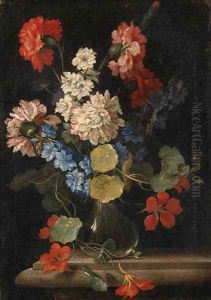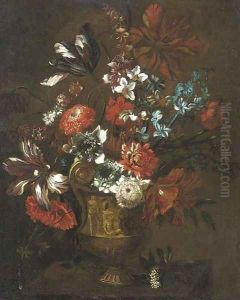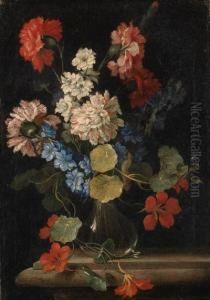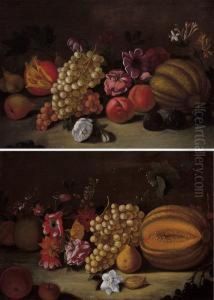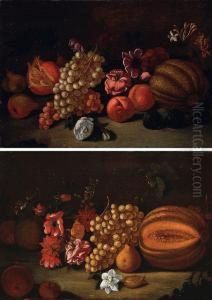Nicolo Stanchi Paintings
Nicolo Stanchi, born in 1626 in Florence, Italy, was an artist whose work exemplifies the Baroque period's dynamic and ornate style, which was prevalent across Europe during the 17th century. Coming from a family deeply involved in the arts—his father, Eugenio Stanchi, was also a painter—Nicolo was part of a lineage that significantly contributed to the Florentine artistic scene. His brothers, Antonio and Giovanni Battista Stanchi, were also painters, making art a family vocation that nurtured Nicolo's development and mastery of his craft.
Stanchi's oeuvre primarily consists of still life paintings, a genre that flourished in the Baroque era, showcasing a meticulous attention to detail and a profound appreciation for the natural world. His compositions often featured flowers, fruits, and occasionally animals, rendered with a vibrancy and realism that made them stand out. These works not only display his technical skill but also reflect the period's fascination with botany and the exotic, brought about by the scientific discoveries and explorations of the time.
Throughout his career, Nicolo Stanchi remained active in Florence, where he contributed to the city's artistic legacy through his work and collaborations. Despite the prominence of religious and historical themes in Baroque art, Stanchi's focus on still life allowed him to explore the interplay of light, texture, and color in a manner that was both innovative and reflective of his era's aesthetic sensibilities.
Stanchi's death in 1690 marked the end of a significant chapter in Florentine art, but his legacy lived on through his contributions to the still life genre. His works are preserved in various collections and museums, serving as a testament to his skill and the broader artistic movements of his time. Nicolo Stanchi remains a noteworthy figure for art historians and enthusiasts, representing the richness and diversity of Baroque art in Italy.
